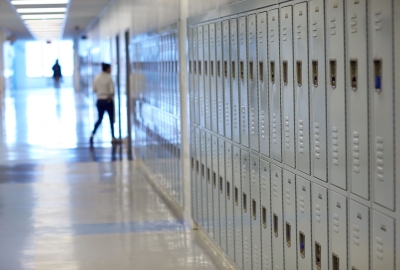
Disrupting School Pushout
About School Pushout
Structural racism and systemic disinvestment in urban communities of color have driven large disparities in health and educational outcomes that show up in various ways. This includes inadequate access to healthcare, housing, food, libraries, parks and other community resources, as well as stark differences in the characteristics of the schools that students attend. These conditions contribute to school pushout—a term used to describe how students can be systematically driven out of the educational system by a variety of factors and circumstances that are often beyond their control. Research has shown, for example, that Black students are more likely to experience punitive school discipline, which can lead to reduced academic performance, increased involvement in the criminal justice system, and disengagement from school.
By reframing the narrative from school “dropout” to “pushout,” researchers and educators seek to emphasize the structural factors and societal inequalities that contribute to students leaving school prematurely. This shift in terminology acknowledges the complex interplay of issues that can lead to students disengaging from the educational process. It also provides a way of looking beyond statistics, to better understand the lived experiences of students who feel marginalized within the education system. By examining the school pushout phenomena, we can address the systemic issues that contribute to students leaving school prematurely and develop solutions that better support the educational attainment and future prospects of millions of students, particularly those who are Black and Brown.
About the Study
This project aims to promote equity in education, improve mental health outcomes, and support healthy development by investigating and addressing the systemic factors that contribute to school pushout in New York City. The project will connect data on neighborhood-level opportunity structures and resource allocation in schools with information about the academic outcomes of students. In collaboration with Dr. Sireen Irsheid from NYU’s Silver School of Social Work, the project will expand on the Research Alliance’s existing longitudinal data archive to include additional information about neighborhood and mental health factors, allowing us to address questions in three critical areas:
- Neighborhood-Level Factors
- Where are NYC students who have been suspended, expelled, or arrested most concentrated?
- Which neighborhood characteristics (e.g., poverty, housing affordability, access to parks, and mental health resources) are most related to these outcomes?
- School-Level Factors
- What school characteristics (e.g., mental health climate, racial equity climate, school poverty rate) are associated with the probability of students being suspended, expelled, or arrested?
- How do race, ethnicity, and gender intersect with these factors, within and between schools?
- Promoting High School Completion
- How do school-based mental health clinics, positive school climates, and racial equity initiatives impact high school completion rates for students affected by school pushout?
The study will use multilevel mixed-effects binary logistic regression models and a critical quantitative perspective to understand the educational and noneducational factors influencing school pushout.
This work is supported through a grant from the NYU Discovery Research Fund for Human Health.






